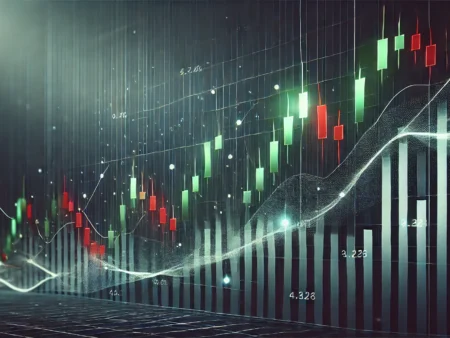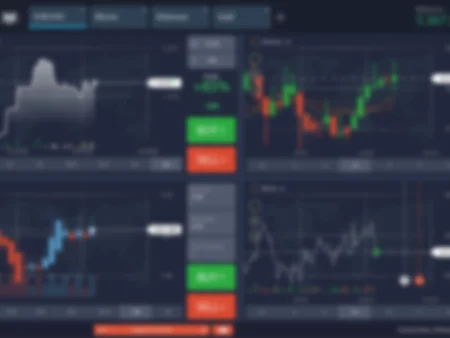What is the ETF Market and How Do You Trade It?
The Exchange-Traded Fund (ETF) market has become a crucial part of modern investing. ETFs are popular due to their versatility, low costs, and potential for diversification, making them appealing to both novice and experienced traders. This article explores what ETFs are, how they function, and how investors can trade them effectively.
1. What is an ETF?
An ETF is a type of investment fund that holds a collection of assets such as stocks, bonds, commodities, or a combination of different asset classes. The unique feature of ETFs is that they are traded on stock exchanges, just like individual stocks, which allows investors to buy and sell shares of the ETF throughout the trading day at market prices.
Types of ETFs:
- Stock ETFs: Track indices like the S&P 500 or focus on specific sectors, such as technology or healthcare.
- Bond ETFs: Provide exposure to government, corporate, or municipal bonds.
- Commodity ETFs: Track the price of physical commodities like gold, oil, or agricultural products.
- Sector & Industry ETFs: Focus on specific sectors such as finance, energy, or biotech.
- International ETFs: Invest in stocks or bonds from other countries or regions.
- Thematic ETFs: Focus on specific trends or themes, such as clean energy or artificial intelligence.
2. How Does the ETF Market Work?
ETFs function similarly to mutual funds in that they pool together money from multiple investors to invest in a diversified portfolio of assets. However, unlike mutual funds, ETFs trade like stocks on a stock exchange, which offers several key advantages:
- Liquidity: ETFs can be bought and sold at any time during market hours, providing flexibility to investors. The price of an ETF fluctuates throughout the day based on supply and demand, just like individual stocks.
- Transparency: Most ETFs disclose their holdings daily, allowing investors to see exactly what assets are in the fund at any given time.
- Cost Efficiency: ETFs generally have lower management fees compared to mutual funds. This is due to their passive nature—most ETFs track a specific index rather than actively selecting investments.
- Diversification: Investing in a single ETF gives exposure to a wide range of securities, which can help spread risk.
3. How to Trade ETFs
Trading ETFs is similar to trading individual stocks, but with a few key differences in strategy and approach. Here’s a step-by-step guide to trading ETFs:
a) Choosing the Right ETF
Before you trade, it’s essential to choose an ETF that aligns with your investment goals. For instance:
- If you’re looking for broad market exposure, an ETF like the SPDR S&P 500 ETF (SPY), which tracks the S&P 500 Index, may be appropriate.
- If you want exposure to international markets, consider an ETF like the iShares MSCI Emerging Markets ETF (EEM).
- For sector-specific exposure, you might choose an ETF like the Technology Select Sector SPDR Fund (XLK).
b) Opening a Brokerage Account
To trade ETFs, you’ll need a brokerage account. Most online brokers offer access to ETFs, and many provide commission-free ETF trading. Some popular online brokers include:
- Fidelity
- Charles Schwab
- E*TRADE
- Robinhood
c) Placing an Order
Just like stocks, you can place different types of orders when trading ETFs:
- Market Order: Buy or sell immediately at the current market price.
- Limit Order: Buy or sell at a specific price or better.
- Stop Order: An order to buy or sell when the ETF reaches a specific price point.
d) Tracking Performance
Once you’ve purchased an ETF, it’s important to monitor its performance regularly. Many platforms offer tools to help track price movements, dividends, and other key metrics. You can compare the ETF’s performance to its underlying index to ensure it’s meeting your expectations.
4. Benefits of Trading ETFs
a) Diversification
ETFs provide immediate diversification. By purchasing a single ETF, investors gain exposure to multiple securities, spreading risk across various assets.
b) Cost Efficiency
With relatively low expense ratios, ETFs offer an affordable way to invest. Many ETFs also provide commission-free trading, which helps to reduce transaction costs.
c) Flexibility
Since ETFs trade like stocks, they offer flexibility in buying and selling. This allows investors to implement various strategies, such as day trading, swing trading, or long-term investing.
d) Tax Efficiency
Compared to mutual funds, ETFs are typically more tax-efficient. Because most ETFs track indexes and have lower turnover, they generate fewer taxable capital gains.
5. Risks of Trading ETFs
a) Market Risk
Like any investment, ETFs are subject to market risk. If the underlying assets of the ETF decline in value, so will the ETF itself.
b) Liquidity Risk
While most ETFs are highly liquid, some niche or small ETFs may experience lower trading volumes, which could make it difficult to buy or sell shares at your desired price.
c) Tracking Error
ETFs aim to mirror the performance of their underlying index or asset, but due to factors like management fees or market volatility, an ETF may not exactly match the performance of the index. This is known as tracking error.
d) Leveraged and Inverse ETFs
Some ETFs use leverage to amplify returns or inverse strategies to profit from market declines. These types of ETFs can be risky, as they are typically designed for short-term trading and may not perform as expected over longer periods.
6. Example of ETF Trading
Let’s say you believe the tech sector will perform well in the coming months, but you don’t want to risk picking individual stocks like Apple or Microsoft. Instead, you can invest in the Technology Select Sector SPDR Fund (XLK), which holds a basket of tech stocks.
- You buy 10 shares of XLK at $100 per share, investing $1,000.
- Over the next few months, the tech sector rises, and the ETF’s price increases to $120 per share.
- You sell your 10 shares at $120, making a profit of $200 on your original $1,000 investment.
In this example, the ETF gave you broad exposure to the tech sector, reduced your risk of picking individual stocks, and provided you with a simple, low-cost way to participate in the sector’s growth.
7. Conclusion
The ETF market provides investors with a flexible, diversified, and cost-effective way to invest in a wide range of assets. Whether you’re interested in broad market exposure, specific sectors, or alternative assets like commodities, ETFs can be an excellent tool to meet your investment goals.
Before you start trading ETFs, make sure to research the underlying assets, understand the risks involved, and choose a broker that meets your needs. With proper planning and strategy, ETFs can become a valuable component of your investment portfolio.
ETFs are a growing segment of the investment world, making them accessible for both beginners and seasoned investors. Always remember to align your ETF selections with your financial goals and risk tolerance to make the most out of this powerful investment vehicle.












